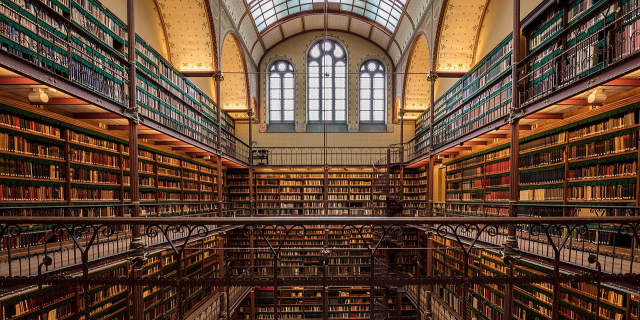Keukenhof (lit. 'Kitchen garden'; Dutch pronunciation: [ˈkøːkə(n)ˌɦɔf]), also known as the Garden of Europe, is one of the world's largest flower gardens, situated in the municipality of Lisse, in the Netherlands. According to the official website, Keukenhof Park covers an area of 32 hectares (79 acres) and approximately 7 million flower bulbs are planted in the gardens annually. Keukenhof is widely known for its tulips, and it also features numerous other flowers, including hyacinths, daffodils, lilies, roses, carnations and irises.
Keukenhof is located in the province of South Holland, south of Haarlem and southwest of Amsterdam in the area called the "Dune and Bulb Region" (Duin- en Bollenstreek). It is accessible by bus from Haarlem and Leiden train stations as well as Schiphol. Though its grounds are open year-round for private affairs ...Read more
Keukenhof (lit. 'Kitchen garden'; Dutch pronunciation: [ˈkøːkə(n)ˌɦɔf]), also known as the Garden of Europe, is one of the world's largest flower gardens, situated in the municipality of Lisse, in the Netherlands. According to the official website, Keukenhof Park covers an area of 32 hectares (79 acres) and approximately 7 million flower bulbs are planted in the gardens annually. Keukenhof is widely known for its tulips, and it also features numerous other flowers, including hyacinths, daffodils, lilies, roses, carnations and irises.
Keukenhof is located in the province of South Holland, south of Haarlem and southwest of Amsterdam in the area called the "Dune and Bulb Region" (Duin- en Bollenstreek). It is accessible by bus from Haarlem and Leiden train stations as well as Schiphol. Though its grounds are open year-round for private affairs and festivals, Keukenhof is only open to the general public for a world-renowned 8 week tulip display from mid-March to mid-May, with peak viewing arriving near mid-April, depending on growing season weather, which varies annually. In 2019, 1.5 million people visited Keukenhof, equivalent to 26,000 visitors per day. By comparison, the Rijksmuseum receives an average of 8,000 visitors per day, the Efteling receives 14,000.
Keukenhof is situated on the 15th-century hunting grounds of Slot Teylingen; it was the castle's kitchen garden (in Dutch: keukentuin), providing game, fruit and vegetables. The most noted inhabitant, and beneficiary of the garden was Countess Jacoba van Beieren (1401-1436).[1] In 1638, the estate was purchased by Adriaen Maertensz Block, captain and governor of the Dutch East India Company. In 1641 he had a large manor house constructed, which he named Keukenhof, now known as Castle Keukenhof.[2][3]
In 1857, Baron and Baroness Van Pallandt, at the time owners of the estate, tasked landscape architect Jan David Zocher and his son Louis Paul Zocher, both also designers of Amsterdam's Vondelpark, to restructure the park and grounds around the castle. Those parks, designed in English style, remain the foundations for the gardens.[4][5]
Keukenhof, the park as it is now known, was established in 1949 by a consortium of bulb growers and flower exporters to showcase their products and support the export industry. The garden opened to the public in 1950 and received 200,000 visitors in its first year.[6] It operates under a charitable foundation of Count Carel De Gaaf van Lynden.

































Add new comment